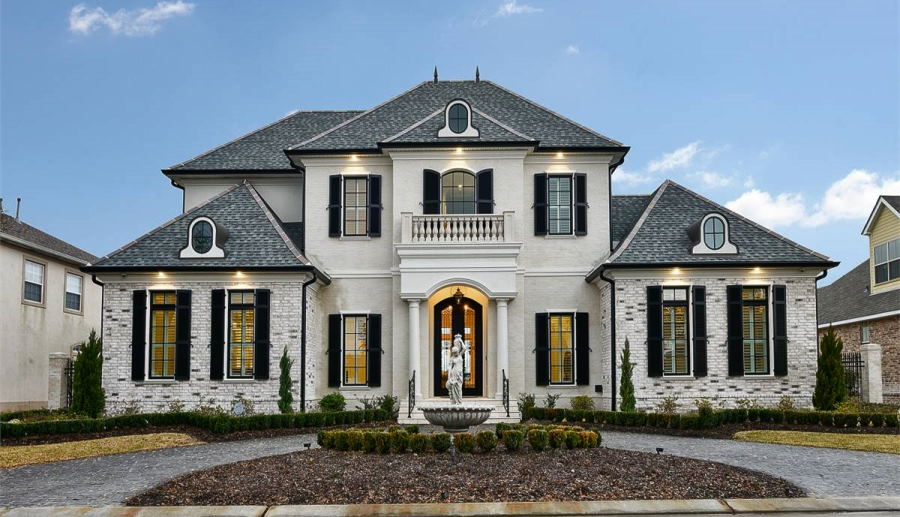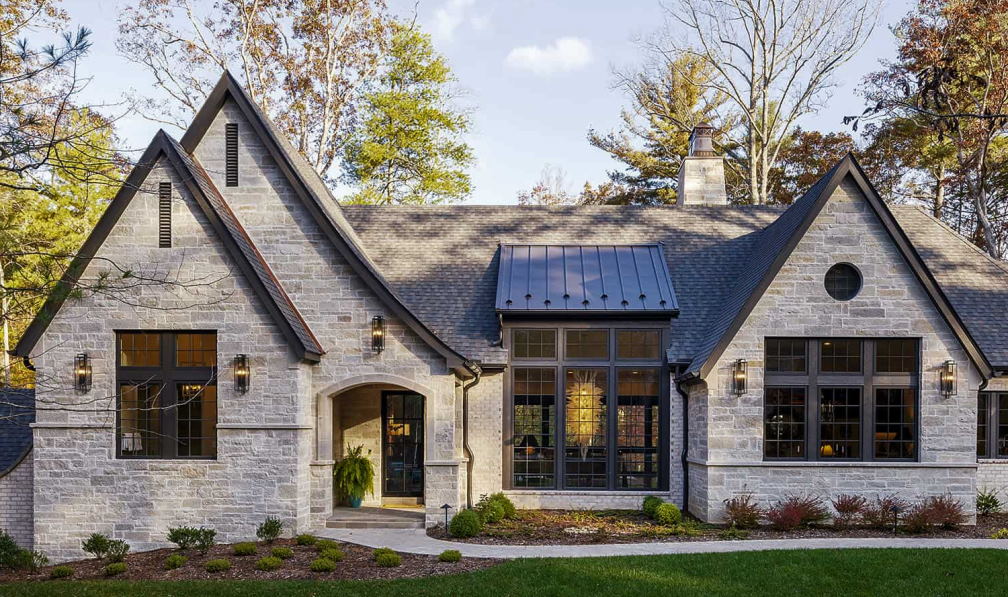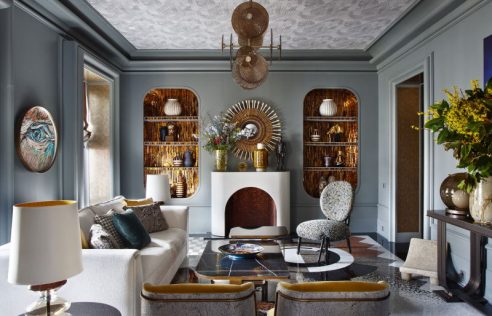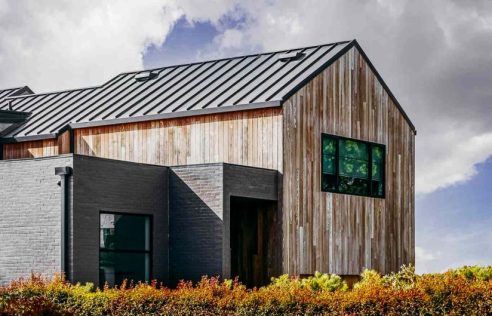If you’ve ever found yourself entranced by the amazing architectural wonders of European countries, then you’ll love this post! We’re taking a journey across Europe to check out some of its most captivating and unique house styles. From the colorful Bauhaus architecture of Germany to the stunning mountain cottages in Switzerland, each country offers something different that holds great charm. So whether it’s getting lost in brickwork details or simply appreciating traditional building techniques, join us as we explore Europe’s vast range of beautiful house styles – they might have you dreaming up your own holiday home abroad!
A tour of Europe’s most unique houses
European house styles range from the modern and sleek to quaint and historic. From traditional French chalets to Spanish haciendas, each country has its style that sets it apart from the rest. Explore some of the continent’s most iconic homes, and you may want to book a ticket overseas.

- Dutch Houses: The Netherlands is known for its canals and colorful tulips, but it’s also famous for its unique housing styles. Commonly referred to as “Dutch houses,” these structures have a distinct look featuring gabled roofs and whitewashed walls. In addition, you’ll often see intricate brickwork patterns peppering the exterior of these homes, which were initially created to aid in keeping these buildings warm and dry.
- Greek Island Villas: Whitewashed villages are a common sight around the coastline of Greece, where many people have built delightful villas nestled amongst the rocky terrain. These homes tend to have terra cotta roofs, stucco walls, and large verandahs that offer spectacular views of the sea beyond. Inside you’ll find minimalist designs with cool tile floors and rustic furniture that create a peaceful and inviting atmosphere.
- Alpine Chalets: Located throughout Germany, Austria, Switzerland, France, and Italy are the quintessential alpine chalet homes. These dwellings usually have steeply pitched roofs with overhanging eaves that help protect them against heavy snowfall during the winter months. Most of these homes were built with wood and stone, giving them a natural style reminiscent of an old mountain lodge.
- Spanish Haciendas: Popular throughout Mexico and the American Southwest, hacienda homes have become increasingly common in Spain as well. These homes usually feature red-tiled roofs, white stucco walls, and enclosed patios or gardens. Inside, they offer plenty of outdoor living space in addition to interior rooms filled with bright colors and artful design elements.
- Portuguese Painted Houses: The streets of Lisbon are lined with brightly colored homes that are known as “Portuguese painted houses.” This unique style is characterized by bold geometric designs featuring sky blues, golden yellows, and brilliant reds. From the tiled exteriors to the ornate window frames, these dwellings are known for their intricate detail and eye-catching beauty.
- British Cottages: If you’re looking for a cozy getaway, consider visiting one of Britain’s many traditional cottages. These homes usually feature rustic stone walls and thatched roofs, giving them a quaint and charming appearance. Many of these cottages have small gardens with colorful flowers and lush greenery, providing the perfect backdrop for an afternoon stroll.
- Danish Modernism: The Scandinavian country of Denmark is known for its modernist architecture, which often features sleek lines and simple shapes. These homes are typically built from concrete or wood, allowing them to blend in harmoniously with the surrounding landscape. Inside, you’ll find bright interiors with clean lines and minimal clutter—perfect for anyone looking to embrace the hygge lifestyle.
- Italian Farmhouses: Italy’s countryside is dotted with traditional farmhouses that offer rustic elegance at its best. These homes usually have stone exteriors, terracotta roofs, and wide windows that look out onto picturesque views of the rolling hills. Inside, they tend to be sparsely decorated with antiques and cozy furnishings that make them feel like home.
- French Chateaus: There’s nothing quite like staying in a luxurious French chateau while traveling across Europe. Typically built from brick or stone, these grandiose structures often feature sprawling gardens, ornate facades, and grand balconies. Inside you’ll find lavish interiors with opulent furnishings and lavish decorations. Whether you stay in a chateau for a night or a week, it’s sure to be an unforgettable experience.
No matter where you travel in Europe, you’ll find a unique house style that speaks to you. Whether it’s a Dutch villa, Greek island villa, or Spanish hacienda, exploring all the different housing styles across this continent is sure to be an adventure like none other. So start planning your journey today!

A look at the different types of houses in Europe
Europe is a continent with a wide variety of cultures and architectural styles, reflecting the region’s rich history. Houses in Europe range from large stately manors to small cottages, and many other types of dwellings in between. Here is an overview of some of the different kinds of houses found throughout Europe:
Terraced House – Common in densely populated cities such as London and Paris, terraced houses are narrow, multi-story buildings that share walls with neighbors. These homes often have small yards or balconies for outdoor living space.
Semi-Detached House – Generally similar to terraced houses but instead two identical structures sharing one common wall. They often feature larger yards than terraced houses due to their wider footprint.
Detached House – Detached houses are single-family homes with no shared walls with neighbors and often feature more generous outdoor yards. These homes are typically more spacious than their attached counterparts but may require larger plots of land to be built on.
Townhouse – Townhouses are typically two or three stories high and can be found in European cities. They often have small balconies or patios and access to common areas like parks and courtyards.
Villa – Villas are large houses typically located in rural settings or resort towns, usually surrounded by lush gardens and expansive grounds. Due to their elevated locations, many villas feature stunning views of the surrounding landscape.
Cottage – A cottage is a small, cozy house typically located in rural settings or near bodies of water. Cottages often have thatched roofs and whitewashed walls, giving them a traditional feel.
Manor House – Manor houses are large stately homes built by wealthy European landowners. They are often surrounded by gardens and parks and feature grand entrances and elegant interiors.
Castle: Castles are large fortified structures built for military defence and used as residences for royalty and the upper classes throughout Europe’s history. Many castles have undergone extensive restoration work to turn them into tourist attractions or hotels.
These are just some of the different types of houses found in Europe. Whatever your preference, there’s sure to be a style of home that suits your needs. From grand manors to quaint cottages, there are plenty of options for those looking for a unique place to call home.


